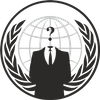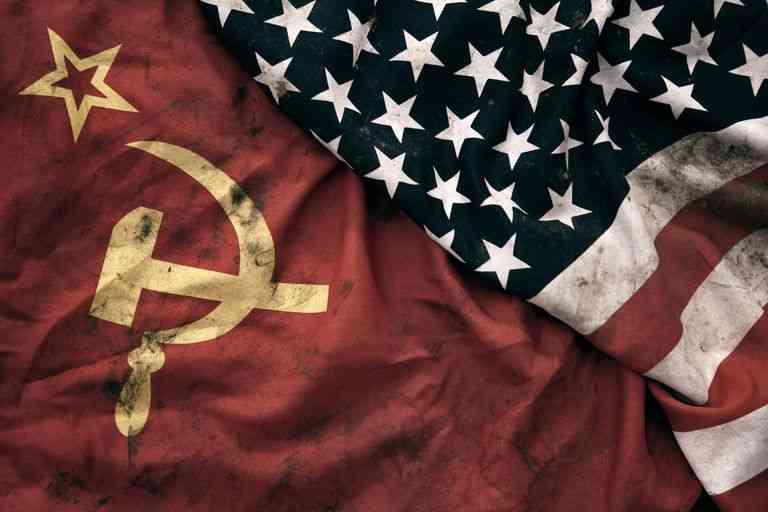A group of Soviet boy scout students, Avril Harriman, the US ambassador to the Soviet Union, presented a wooden imitation of the official seal of the United States of America.

In his memoirs, the US ambassador to the Soviet Union, George Kennan, revealed that Soviet intelligence spied on the office of the American ambassador in Moscow using a wooden eagle.

The gift, which was an expression of friendship between the Soviet Union and its (( ally in World War II)) , was suspended at Spazzò House, the official residence of the American ambassador. (( The gift remained on the wall for seven years )), until the State Department accidentally discovered that the ring was not a decoration, but rather a spy device.
The Soviets made one of the listening devices, which was dubbed by the American intelligence as "the thing" and planted it inside the gift, thus enabling the Soviets to eavesdrop on "Harriman" and his successors from the ambassadors throughout their official residence.
"That device represented an advanced electronic application technology (...) I have the impression that since the discovery of that device, a technological breakthrough has occurred in the art of government eavesdropping," wrote George Kennan.
During their work in the Soviet Union, American diplomats and ambassadors always believed that the walls in Moscow have ears, as Rep. Henry J. Hyde told Congress during the debate over the end of the Cold War that "Russia's reputation for espionage and eavesdropping goes back to the Tsar era"
"We are always surrounded by professional and ordinary spies" said James Buchanan, who was the US ambassador to Russia between 1832-1833 and later became president of the United States. "It is rare to hire a servant who is not a secret detective with the police."
At the beginning of the twentieth century, the world of eavesdropping and espionage was supplemented with modern technology such as small portable portable taping and recording devices. When visiting ambassadors at Spazoo House, guests were given warning cards informing them that the house, all rooms, and even the garden were under observation. "Something" was one of the most advanced eavesdropping devices at the time, as it was designed by Sergejevich Termano, known to the American authorities as the "Leon Thermen", inventor of the musical instrument "Thermen".
Thermen lived in the United States for a period of time, but he returned to his homeland, Russia, before the outbreak of the Second World War, to escape financial problems. Upon his arrival to Russia, he was thrown into prison as a result of the so-called "rehabilitation" and eventually he was put to work in the "Sharkka" laboratory, a secret laboratory within the Gulg labor camp system where his task was to find better methods of how to spy devices in " Spouse House ".
The system invented by "Thermen" consists of an antenna and a thin-film coated cylinder that acts as a microphone. The Soviet intelligence officers stationed in exchange for "Spouse House" operate the device by shining a radio signal on it, which then bounces back to the receiving device in their possession. When the ambassador or someone else in the official office speaks, the sound waves touch the membrane inside the device, which in turn transmits the signal and transmits it to the receiver outside so that the Soviets can hear the conversations taking place.
"The victory of the eavesdropping device on the official seal was its simplicity," said Robert Brown in his book on early methods of technical surveillance (electronic invasion). with time ". The device was only able to operate when the Soviets had overpowered the radio signal, making it impossible to track it.
Such incidents and others, such as the preparations for the Ambassador's Residence to receive the new Ambassador George Kennan in 1952, were considered excellent opportunities for planting spy devices - which necessitated numerous security surveys of the Ambassador's house, but they all failed.
In his memoirs, Ambassador Kennan wrote, ".The atmosphere of innocence represented by the walls of old buildings was so pleasant and attractive that you wondered if there had been a sweeping change in Soviet methods of dealing (which there was nothing to indicate) or that our methods of tracking and monitoring are outdated."
Regardless of whether or not what the ambassador wrote was real, "Ford and Joseph Bizgin" security technical experts at the Ministry of Foreign Affairs arrived in Moscow to conduct extensive searches. "Bizzen", dubbed "the cloth dealer," seized the suspicion that the Soviet secret services had removed wiretapping devices before conducting any surveys and then replanted them upon completion. To prevent them from repeating that, "Bizzen" acted as if he was one of the guests at Ambassador Kennan's house.
All his equipment was sent in advance and was concealed in a tight manner before his arrival. For more camouflage, he spent many times playing cards and wandering in the city, but he spent his time At night observing home furniture for eavesdropping devices. And when they couldn't find anything, Ford and Bizgin suggested that the ambassador try to make up some important conversations that might help them find out if someone was listening in on them or not.
One night, the ambassador sat in the office with his secretary, where he began dictating him to write a secret diplomatic message (virtually a message that had been sent many years ago, and that the secret was lifted and printed in one of the publications of the US series on Foreign Relations issued by the State Department), and at the same time Ford and Bezjian were on a tour around the house with their detectors.
Kinan recounts from his memories that while he was "writing what is dictated to him", Bizzian picked up Kennan's voice on the radio receiver that was with him and tracked the signal to its source. Bizzian went to the office and addressed Kennan, "with a whisper and gesture, to continue and continue." He left the place to bring Ford and the two men returned to work around the room.
The sign that carried Kennan's voice seemed to come from the wall behind the official seal emblem. Bizgyan removed the wooden inscription, as Kennan wrote, "He took a wall hammer, and - and I was puzzled and paranoid - began to break the brick wall where the seal was suspended." And when he did, the signal was interrupted. Bizzian then realized that the illness was not in the wall but in the seal, and took his hammer toward the Soviet gift.
Kennan wrote: "I continued writing the telegram, and I remained amazed but silent about the unusual thing I was seeing." "Within a short time, though, it was over. Trembling with excitement, the technician removed from the shattered pieces of the seal a small device, the size of which did not exceed the size of the pencil."
That night, Bezigian slept with the tapping device under his pillow so that Soviet agents could not retrieve it. The next day, ((he was sent to Washington to be studied and reinstalled by US intelligence agencies))
In the years that (the thing) was hung on the wall, Spasso's house was full of activities, guests - at the highest levels including Major General Eisenhower, White House staff and dozens of members of Congress - and information.
A member of the Soviet team who monitored the house via (the thing) said that this allowed them "to obtain specific and very important information, which gave them certain preferences in forecasting and performing global policy during the difficult period of the Cold War."
Thank You For Reading The Article, I Hope You Enjoy Reading It, Subscribe To Our Author Page Please,,, Thank you
-EnRi


